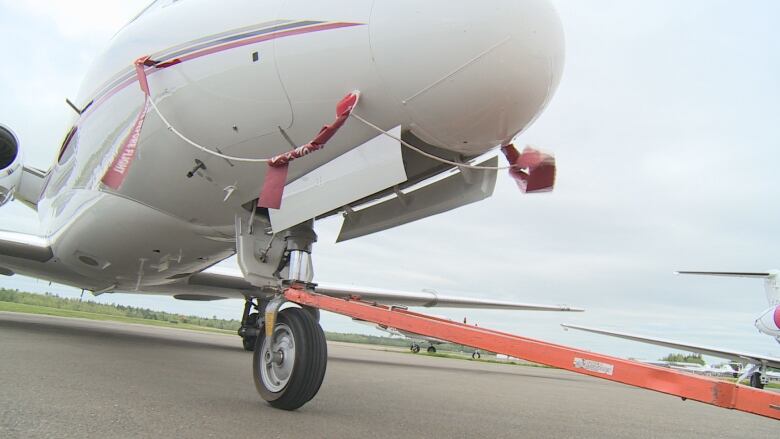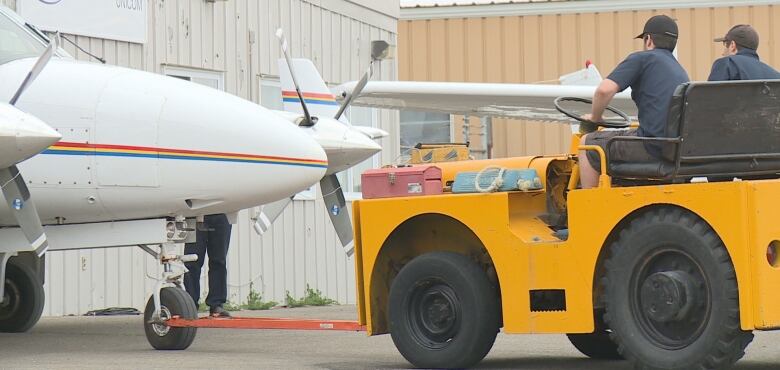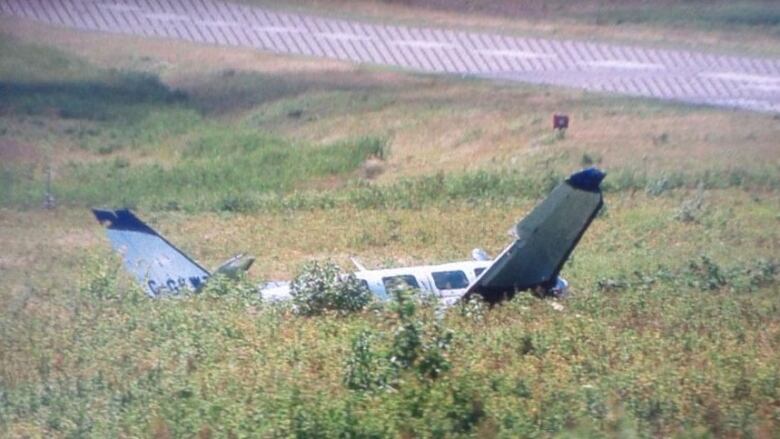Ambulance N.B. flight made emergency landing over safety hazard
A piece of equipment was left hanging off plane during a flight to get a patient in Bathurst in March

An Ambulance New Brunswick flight to pick up a patient in Bathurst earlier this year had to make an emergency landing after taking off with atow bar attached to it.
The tow bar, used with a tractor to help an aircraft get from a hangar or airport apron to the runway,caused rudder issues for the pilots as they approached their destination, forcing them to turn back foranemergency landing in Moncton, according to a Transport Canada incident report.
The metal bar usually measures about two metres in length.
Worstof all it could fall to the ground and hit somebody.- GeorgeDewar, formerTransport Canada civil aviation inspector
A former Transport Canada civil aviation inspector says leaving thebar attached during flight "could be extremely dangerous."
"It could hit another part of the airplane, it could hit the propellers," said George Dewar, who worked as an inspector for Transport Canada for more than two decades and has experience flying the same type of plane that was used by Ambulance New Brunswick.
"And probably worstof all it could fall to the ground and hit somebody."
The Voyageur Airways Beech B200 made the emergency landing on March 3 during the night, according to the Transport Canada report.
Since the plane didn'treachthe patient inBathurst, the ill or injured person had to be transferred by land in an ambulance to their destination.
'Very rare'

Dewar saidnot removing the tow bar before takeoff is so uncommon he's only heard of it happening once before in his years working in the aviation industry.
"It's very, very rare," said Dewar.
The Transport Canada report indicates the plane prepared to land in Bathurst, but then the pilot "had a rudder problem and requested a clearance back to Moncton with emergency response services."
Once the plane landed, the crew realized the tow bar hadn't been removedand the landing gear doorsweredamaged.
"This sort of incident should not happen ... somebody made a mistake," said David Jeanes, a spokesperson for Transport Action Canada, a safety advocacy group.
"There should be procedures and check lists and responsibilities to prevent mistakes like this or accidents from happening," said Jeanes.
Ambulance New Brunswick, which is a Crown corporation that provides ambulance service in the province, has a contract with Voyageur Airways Ltd. to provide air transfers ofpatients tospecialized hospitalsacross the Maritimes, Quebec and Ontario.
"The air carrier has performed a comprehensive review to ensure there would not be a repeat of such an event," saidYvonBourque, director of operations for Ambulance New Brunswick,in a statement.
CBC News contactedVoyageur Airways for an interview, but has not received a response.
Grand Manan crash

The plane in the Aug. 16 2014 accident was operated by Atlantic Charters, another air carrier contracted by Ambulance New Brunswick, only serving Grand Manan.
The TSB report found the pilot lost visual references in the fog, but it also found the pilot who installed the air ambulance systemdid not have approved training.
The system includedan ambulance unit with overhead panel, a stretcher, and an adapter.
The reportgoes on to identify shortcomings with ANB'saviation industry knowledge.
"ANB was unfamiliar with what was meant by standard industry terms If organizations contract aviation companies to provide a service with which the organizations are not familiar, then there is an increased risk that safety deficiencies will go unnoticed," the TSB report said.












_(720p).jpg)


 OFFICIAL HD MUSIC VIDEO.jpg)
.jpg)



























































































